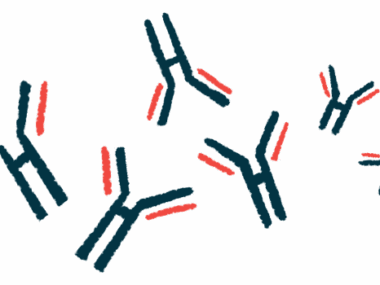Woman with blood cancer gets secondary CAD diagnosis
DLBCL is a type of fast-growing cancer that begins in immune B-cells
Written by |

A woman in Taiwan likely developoed cold agglutinin disease (CAD) secondary to advanced diffuse large B-cell lymphoma (DLBCL), a type of fast-growing blood cancer that begins in immune B-cells, a study reports.
This case adds to a growing, but still small, number of reports linking the two diseases.
“We report a rare presentation of CAD in DLBCL and highlight the need for [blood cancer] survey in such kind of patients,” the researchers wrote. The case study, “A rare case of gastrointestinal diffuse large B cell lymphoma with cold agglutinin disease presentation,” was published as a letter to the editor of The Kaohsiung Journal of Medical Sciences.
CAD is an autoimmune disease caused by self-reactive antibodies called cold agglutinins that bind to red blood cells at cold temperatures, causing their destruction. This results in CAD symptoms such as fatigue and anemia, or low levels of red blood cells or the oxygen-transporting hemoglobin protein inside these cells.
There are two main types of CAD. Primary CAD occurs without a known cause, while secondary CAD develops as the result of other diseases, such as infections, other autoimmune diseases, and blood cancers.
DLBCL is a rapidly growing blood cancer that can form in the spleen, liver, or other tissues and organs. While it’s rarely observed with CAD, some reports on CAD have described an “aggressive pattern in DLBCL with bone marrow involvement,” wrote four researchers in Taiwan who described the case of a 40-year-old woman in whom CAD was likely secondary to an advanced DLBCL that affected her gastrointestinal system.
A CAD diagnosis
The woman was found to have severe anemia during a health check in October 2020. She had no fever or swollen lymph nodes, which can indicate an infection or certain blood cancers like DLBCL, but she had some digestive issues.
Blood tests showed low hemoglobin levels and high counts of reticulocytes, or immature red blood cells, a sign of an active bone marrow response to produce more red blood cells to compensate for their loss.
A Coombs test was positive, indicating antibodies that may bind to red blood cells. More testing revealed high levels of cold agglutinins, confirming a diagnosis of CAD. The woman tested negative for mycoplasma bacteria. A computed tomography (CT) scan revealed an enlarged spleen and a mass in the colon, tissue analysis of which showed DLBCL.
Further imaging tests showed the blood cancer affected multiple parts of the body, including the colon, spleen, and lymph nodes, and was at an advanced stage.
The woman underwent six cycles of a chemotherapy regimen called rituximab-EPOCH, followed by a stem cell transplant to replace diseased blood cells with healthy ones, in August 2021. She achieved complete remission, meaning all signs of cancer disappeared.
However, the woman had a cancer relapse in March 2023 that affected her central nervous system, that is, the brain and spinal cord. She died in April 2024 due to disease progression.
“DLBCL with CAD is rarely … reported,” and “the outcomes … [are] uncertain,” the researchers wrote. “However, clinical presentation, optimal treatment strategy, and outcomes warranted further information to draw a clear picture.” They said blood cancer should be considered as a possible cause of CAD.






